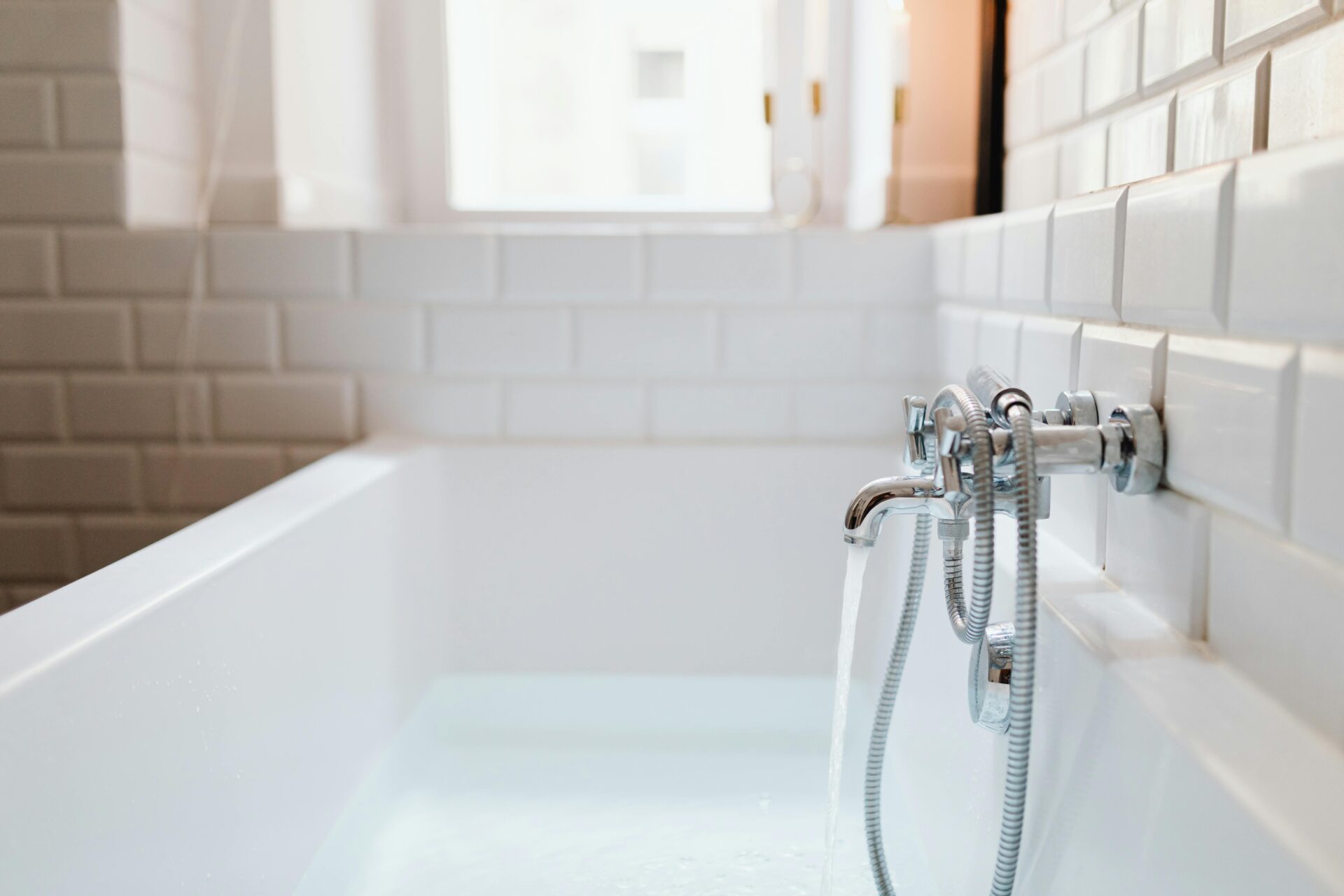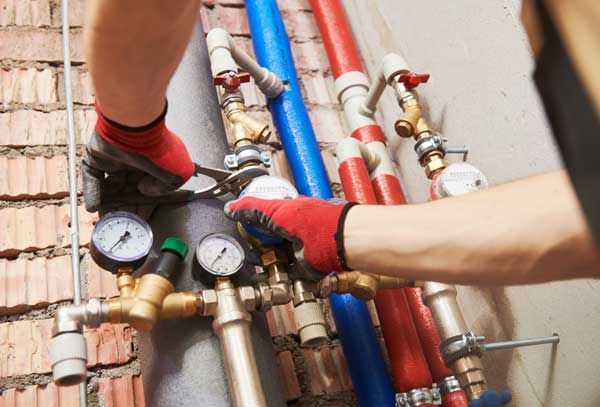Are you interested in content concerning 6 Essential Plumbing Checks for New Homeowners?

For new property owners, understanding and keeping washroom pipes can save both money and time by stopping costly problems down the line. Right here are some vital washroom pipes tips to assist you maintain whatever running efficiently.
Plan For Cold Weather
Secure your pipes from freezing throughout winter by shielding pipelines in unheated locations like basements, attic rooms, and garages. Throughout extreme cool, let cold water drip from taps served by revealed pipes to help protect against freezing.
Schedule Regular Maintenance
Consider scheduling yearly examinations with a licensed plumber. They can detect issues that you might miss, such as concealed leaks or wear and tear on pipes and components. Routine upkeep helps expand the life of your plumbing system and can prevent emergencies.
Familiarize Yourself with the Main Shut-Off Valve
Understanding where the primary water shut-off shutoff lies in your home is critical. This enables you to quickly turn off the water supply in case of major leaks or throughout plumbing emergencies, protecting against extensive water damage.
Consistently Examine for Leaks
Little leaks can result in huge troubles. Regularly examine under sinks, around commodes, and near plumbing fixtures for any type of indicators of leaks. Search for wetness, small drips, or corrosion. Catching and fixing leakages early can protect against more major damage and conserve water.
Keep Your Water Heater
Ensure your water heater is set to a proper temperature (typically around 120 degrees Fahrenheit) to avoid scalding and decrease power usage. Flush the container each year to get rid of debris buildup, which can decrease the effectiveness and life expectancy of your heating system.
Upgrade Your Fixtures
If your home has older components, take into consideration upgrading to much more reliable models. Modern toilets, showerheads, and faucets are created to make use of much less water while offering good pressure, which can dramatically minimize your water bill and ecological impact.
Beware with Do It Yourself Plumbing Repair Works
While it's appealing to deal with all home repair work by yourself, beware with plumbing. Some concerns might require specialist expertise, specifically if they entail primary water lines or sewer repairs. Hiring a professional can occasionally be extra economical than DIY, especially if it protects against additional damages.
Don't Ignore Slow Drains Pipes
If your sink or tub is draining gradually, it's usually a sign of a blockage developing. Addressing this very early can avoid a total blockage. Utilize a bettor or a plumbing's snake to remove particles. Avoid making use of chemical drainpipe cleaners as they can harm your pipes over time.
Know What Not to Flush
Commodes are not garbage disposals. Stay clear of flushing anything besides bathroom tissue and human waste. Products like wipes, womanly hygiene items, and cotton swabs ought to be thrown away in the garbage to prevent blockages and sewage system back-ups.
Install Strainers in Drains
Area strainers in your sink and bathtub drains pipes to capture hair and other particles before they enter your pipes system. Cleansing the strainers routinely will aid avoid build-up and maintain water moving freely.
Final thought
Comprehending and maintaining your home's restroom pipes can prevent numerous usual issues. By complying with these important ideas, you can guarantee your restroom stays useful and efficient, saving you money and time in the long run.
Things to consider while plumbing your new bathroom
Underground pipes and stormwater drains
Once these have been successfully laid, your plumber will need to test the system to check for water tightness. After this, the area will be filled back with the excavated earth. Backfilling of plumbing works must be done with extreme care because debris or rocks that are backfilled into trenches must not cause any damage to the buried piping. A mixture of backfill needs to be used. For example, if lumpy clay is excavated, then the first 300-500 mm (millimetres) of backfill must consist of sandy, loose earth. On the contrary, if concrete needs to be paved at the top, then crushed and compacted earth should be used, especially when it comes to a deep excavation.
Pipes
Clean water enters the plumbing pipe from the primary water supply line. Unclean water is successfully pulled down by gravity to exit the system of pipes. Air blowing through all the vents ensures that the pipes stay clean and clear. This is a simple and self-sustaining setup that should survive the test of time, when done correctly.
Plumbing items and fixtures
If you are carrying out plumbing in a new house, you need to install plumbing items and fixtures before the completion of the house’s interiors. Showers, sinks, and tubs are easier to install when the doorways and walls have not yet been installed.
Sewer lines and septic tanks
Installing sewer lines and septic tanks is extremely challenging when it comes to a home’s plumbing system. Firstly, you need to know the septic tank’s size. This can be calculated by the total number of bedrooms in your house. The venting system of your septic tank must be flawless.
Placement and positioning of the main stack
The main stack is basically a pipe with a diameter of approximately 3-4 inches. It typically runs from your home’s basement to the terrace or roof. The lower section of the main stack is responsible for collecting wastewater from several other plumbing fixtures. The upper section is used for venting. While you are installing plumbing in your new house, you will need to find a spot where the main stack runs without interruptions.
Installing drains and vents
Drain and vent pipes are generally 1-1.5 inches in diameter. Pipes must slant at a quarter of an inch per foot to drain efficiently. Bends, where the pipes eventually join the main stack, must be smooth and not be angled sharply. Every plumbing fixture must have a trap beneath it, which will catch water and prevent obnoxious gases from gaining entry into your living quarters. Moreover, every fixture needs to be vented.
Waterproofing and final testing
Your plumber will most likely carry out waterproofing of retaining walls, lower rooms, and basements, where an underground sump is generally constructed to store water. Roofs, too, need specialised treatment, and plumbers need to take into account gutter overflows in regions that receive heavy rainfall.
After the complete plumbing has been installed in your new home, every single thing should be tested to ensure adequate functionality and immaculate efficiency. This includes all water supply sources, bathroom fixtures, and sewerage.
https://www.jswonehomes.com/blogs/Construction/things-to-consider-when-plumbing-your-new-bathroom

Show Details